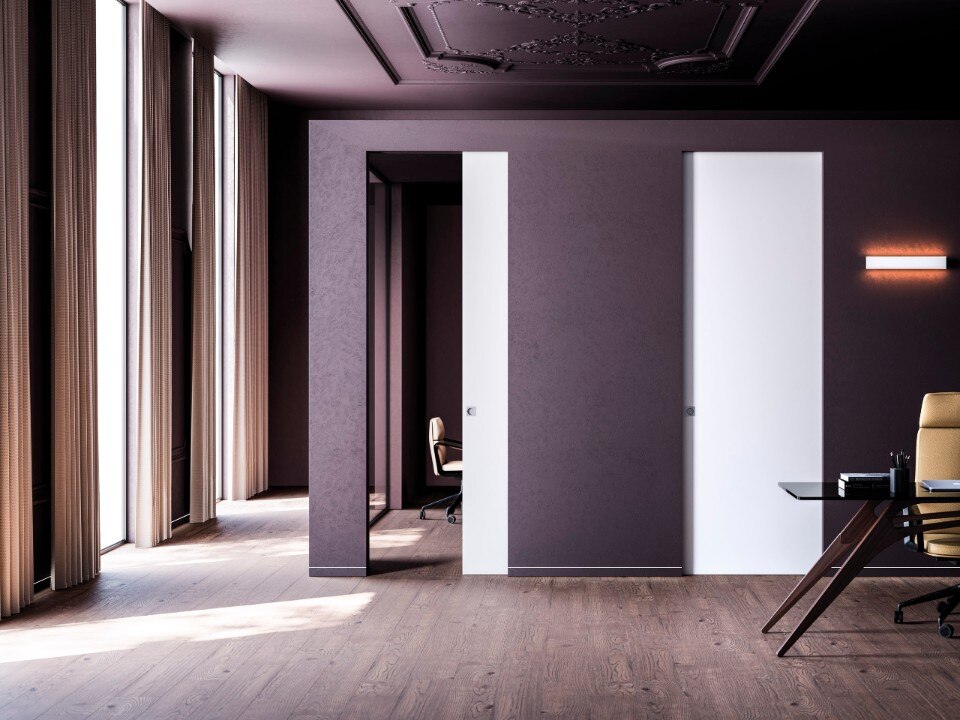
Eclisse: when invisibility art shakes up interior design
A leader in manufacturing pocket door frame systems, Eclisse redefines the concept of living space. Through solutions like Syntesis Line, the company transforms doors into continuous design elements.
- Sponsored content
Designed by Indian studio Anahata, the Padival house is a private dwelling located in the south of Belgaum, in Mangalore (Karnataka). The courtyard was an integral part of a traditional house. We chose to vividly reflect the memories of a courtyard, readapting the vernacular typology to a house in an urban context. The program is organized into spatial compartments around the courtyard based on the function they are designed to serve. Each of these compartments further evolves into primordial geometric masses.

 View gallery
View gallery
The spatial strategy is designed to visually connect spaces to allow a sense of communication. The concrete ceiling is left exposed to add a sense of informality in contrast to the smooth white plastered walls. Light percolates into the building through strategically placed fenestration, in some places touching the roof, allowing an unobstructed flow of view to the outside. Two major light wells, the courtyard and the skylight above the stairs in the family space display a subtle, perpetual play of light and shadow creating a high sense of order and visual impression.

- Project:
- Padival House
- Location:
- Belagavi
- Program:
- single family house
- Architect:
- Anahata – Mithila Manolkar, Puneeth Hegde
- Structural engineering:
- Vinay Behre Associates
- Contractor:
- Bharat industries, SAM engineers and fabricators
- Area:
- 210 mq
- Completion:
- 2017

Innovation and sustainability in building materials
The new range of lime-based thermal plasters by Röfix is designed to provide advanced insulation solutions.
- Sponsored content































